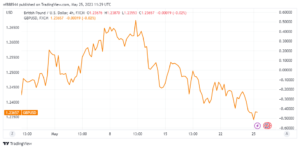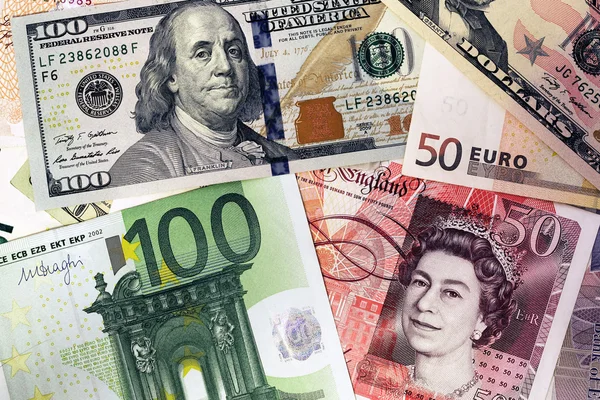The GBPUSD pair has managed to recover from multi-week lows.
GBPUSD reversed course and climbed over 1.2350 early Thursday, after reaching its lowest level since early April at 1.2330. Unless the pair flips 1.2400 into support, the near-term technical outlook implies that sellers will keep control.
The Bank of England’s bearish wagers may assist the Pound Sterling minimize its losses.
Despite stronger-than-expected UK Consumer Price Index (CPI) data reviving hopes for more Bank of England (BoE) rate rises. The continuous US Dollar (USD) gain pushed GBPUSD to stay under negative pressure.
The USD took advantage of risk aversion in the middle of the week. As investors were increasingly anxious about the uncertainties surrounding the US debt-limit discussions.
Furthermore, remarks Federal Reserve (Fed) Governor Christopher Waller drew aggressive Fed bets, allowing the USD to beat its rivals. Waller did not promise to a halt in rate rises at the next meeting. “Prudent risk management may suggest skipping a hike in June, leaning towards a hike in July depending on inflation data. And if banking conditions haven’t tightened excessively,” he stated.
Meanwhile, according to Reuters, money markets are completely pricing in another 100 basis point boost by the Bank of England by December. If the USD loses interest due to a favorable shift in risk sentiment. Market positioning might lift the Pound Sterling even more, opening the way for a dramatic comeback in GBPUSD.
In the afternoon, the US Bureau of Investigation The Bureau of Economic Analysis will provide the first revision to first-quarter GDP growth. Which is unlikely to have a significant influence on the USD’s valuation.
The weekly Initial Jobless Claims statistics from the US Department of Labour will also be scrutinised for new impetus. We have observed a negative impact on the USD in recent weeks when claims have risen rapidly, and vice versa. As a result, a similar short-term reaction may be seen in the early American session.
GBPUSD Technical Outlook
GBPUSD ascended into the upper half of the descending regression channel, and the four-hour chart’s Relative Strength Index (RSI) indicator rebounded above 40, indicating that the pair is staging an upward correction.
The descending channel’s top limit is strong. The resistance level is 1.2400. That level is also reinforced by the 20-period Simple Moving Average (SMA).

If GBPUSD recovers above that level and begins to use it as support, it may continue its recovery towards 1.2450 (Fibonacci 23.6% retracement of the most recent rally, 50-period SMA) and 1.2480 (200-period SMA).
On the downside, the initial level of support is at 1.2340 (the lower limit of the falling channel, a static level), followed by 1.2300 (the psychological level, a static level) and 1.2240 (the Fibonacci 50% retracement).









